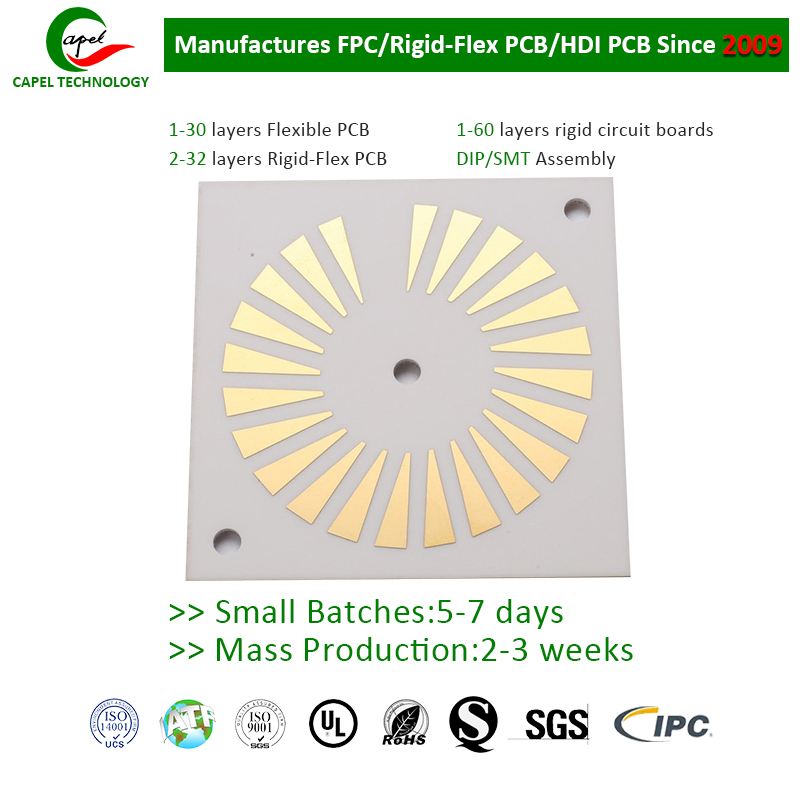In this blog post, we will discuss the limitations of using ceramics for circuit boards and explore alternative materials that can overcome these limitations.
Ceramics have been used in various industries for centuries, offering a wide range of advantages due to their unique properties. One such application is the use of ceramics in circuit boards. While ceramics offer certain advantages for circuit board applications, they are not without limitations.
One of the main limitations of using ceramic for circuit boards is its brittleness. Ceramics are inherently brittle materials and can easily crack or break under mechanical stress. This brittleness makes them unsuitable for applications that require constant handling or are subject to harsh environments. In comparison, other materials such as epoxy boards or flexible substrates are more durable and can withstand impact or bending without affecting the integrity of the circuit.
Another limitation of ceramics is poor thermal conductivity. Although ceramics have good electrical insulating properties, they do not dissipate heat efficiently. This limitation becomes an important issue in applications where circuit boards generate large amounts of heat, such as power electronics or high-frequency circuits. Failure to effectively dissipate heat may result in device failure or reduced performance. In contrast, materials such as metal core printed circuit boards (MCPCB) or thermally conductive polymers provide better thermal management properties, ensuring adequate heat dissipation and improving overall circuit reliability.
Additionally, ceramics are not suitable for high frequency applications. Since ceramics have a relatively high dielectric constant, they can cause signal loss and distortion at high frequencies. This limitation limits their usefulness in applications where signal integrity is critical, such as wireless communications, radar systems, or microwave circuits. Alternative materials such as specialized high-frequency laminates or liquid crystal polymer (LCP) substrates offer lower dielectric constants, reducing signal loss and ensuring better performance at higher frequencies.
Another limitation of ceramic circuit boards is their limited design flexibility. Ceramics are typically rigid and difficult to shape or modify once manufactured. This limitation limits their use in applications requiring complex circuit board geometries, unusual form factors, or complex circuit designs. In contrast, flexible printed circuit boards (FPCB), or organic substrates, offer greater design flexibility, allowing the creation of lightweight, compact, and even bendable circuit boards.
In addition to these limitations, ceramics can be more expensive compared to other materials used in circuit boards. The manufacturing process for ceramics is complex and labor-intensive, making high-volume production less cost-effective. This cost factor can be an important consideration for industries seeking cost-effective solutions that do not compromise performance.
While ceramics may have certain limitations for circuit board applications, they are still useful in specific areas. For example, ceramics are an excellent choice for high-temperature applications, where their excellent thermal stability and electrical insulation properties are critical. They also perform well in environments where resistance to chemicals or corrosion is critical.
In summary, ceramics have both advantages and limitations when used in circuit boards. While their brittleness, poor thermal conductivity, limited design flexibility, frequency limitations, and higher cost limit their use in certain applications, ceramics still possess unique properties that make them useful in specific scenarios. As technology continues to advance, alternative materials such as MCPCB, thermally conductive polymers, specialty laminates, FPCB or LCP substrates are emerging to overcome these limitations and provide improved performance, flexibility, thermal management and cost for various circuit board applications benefit.
Post time: Sep-25-2023
Back







